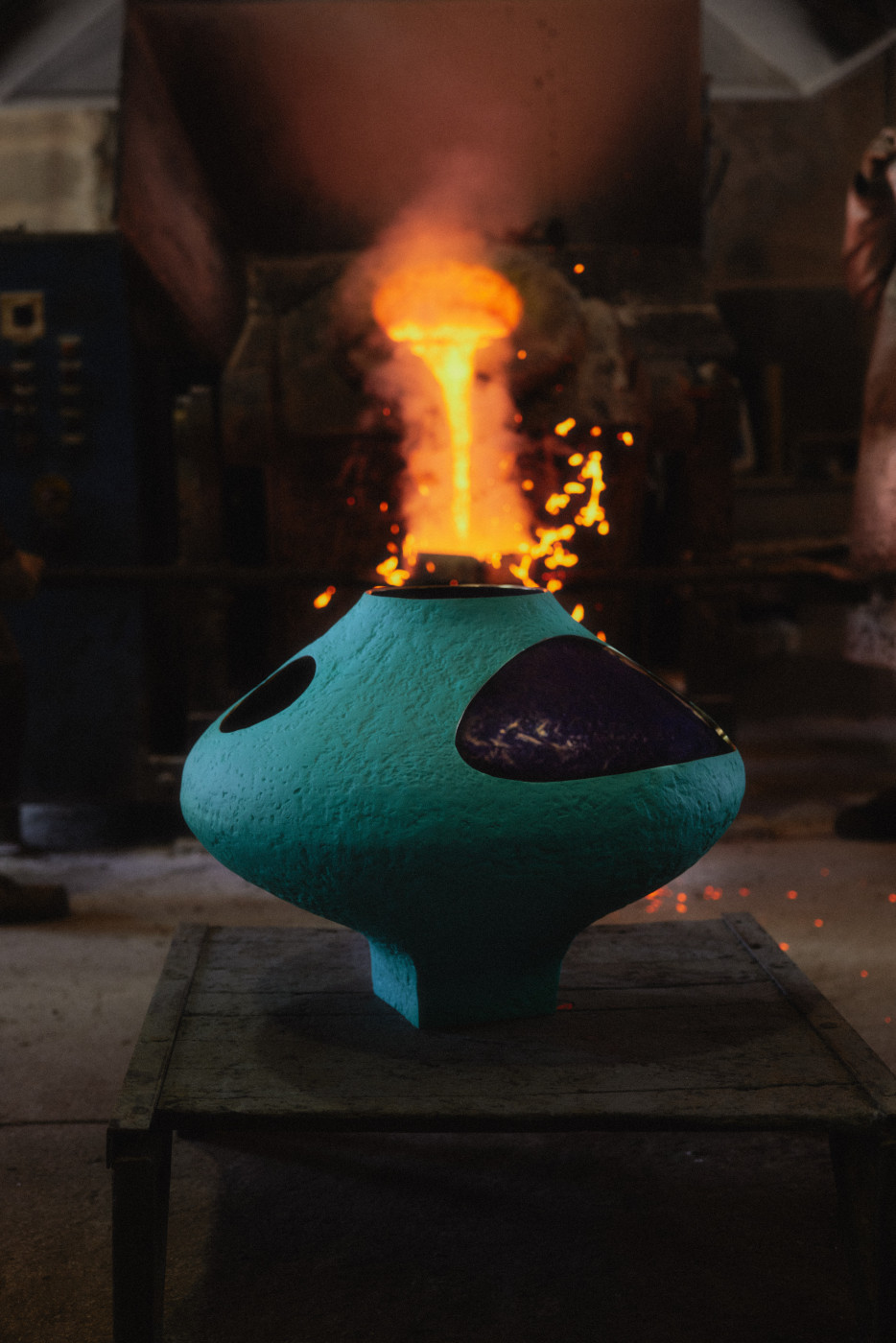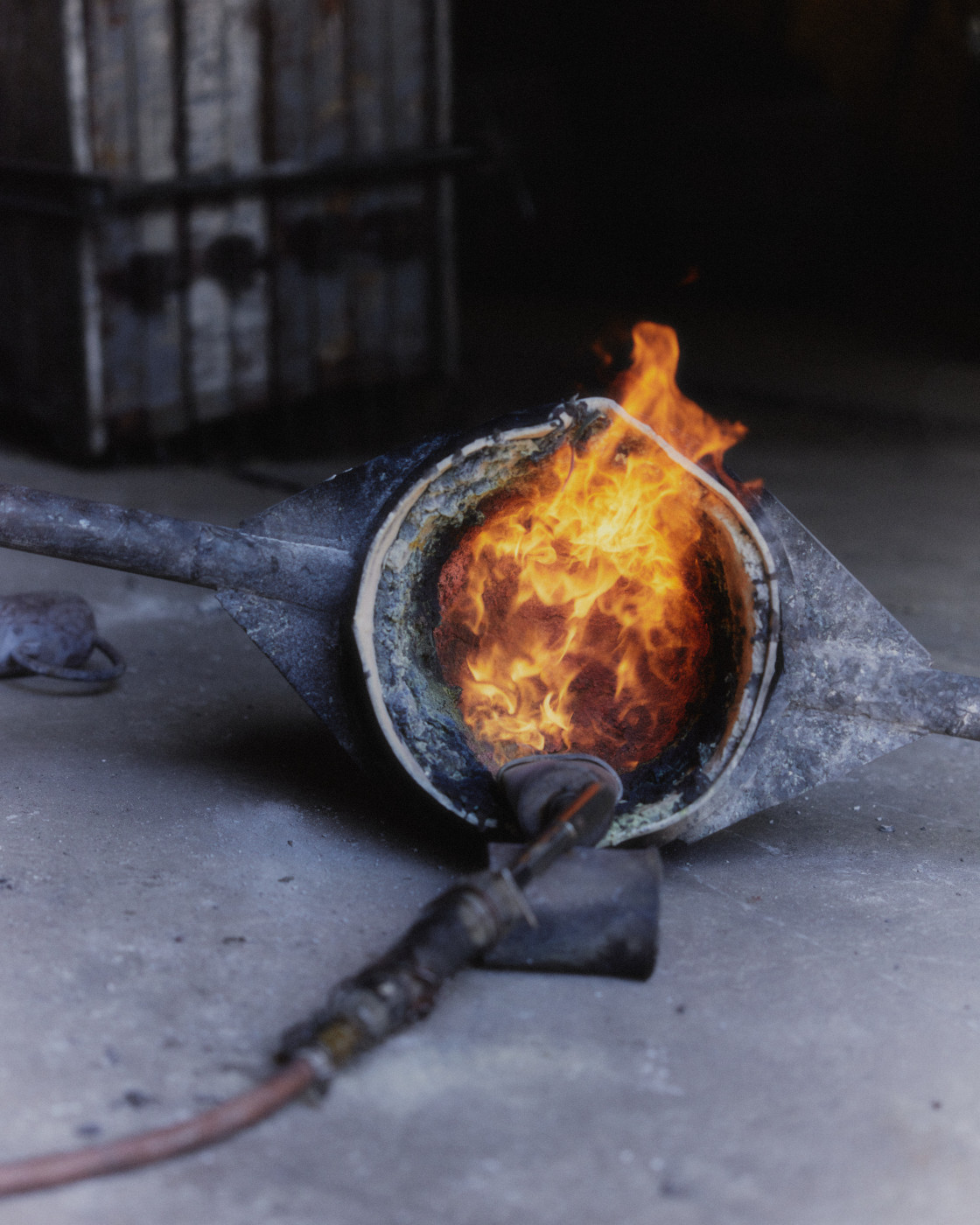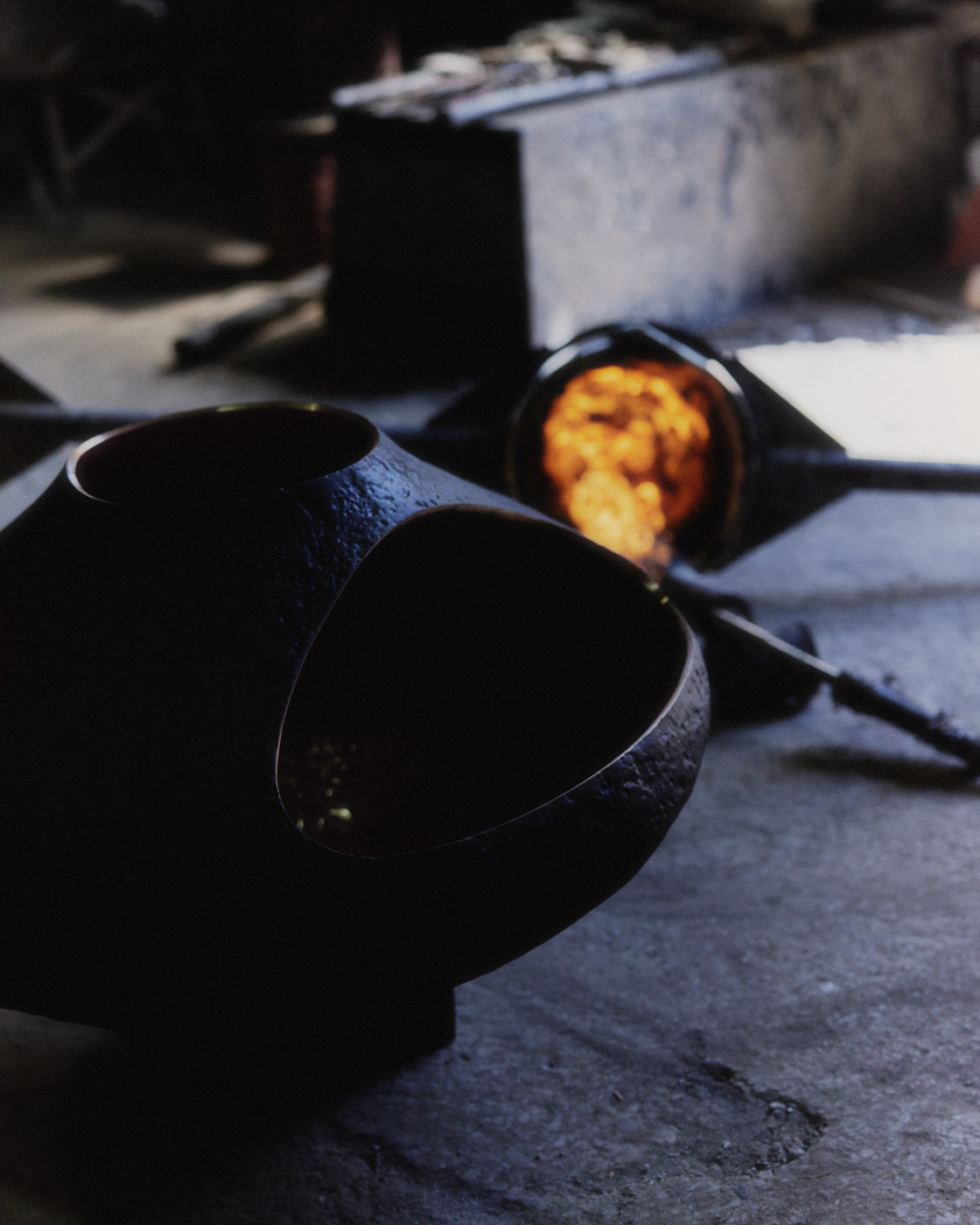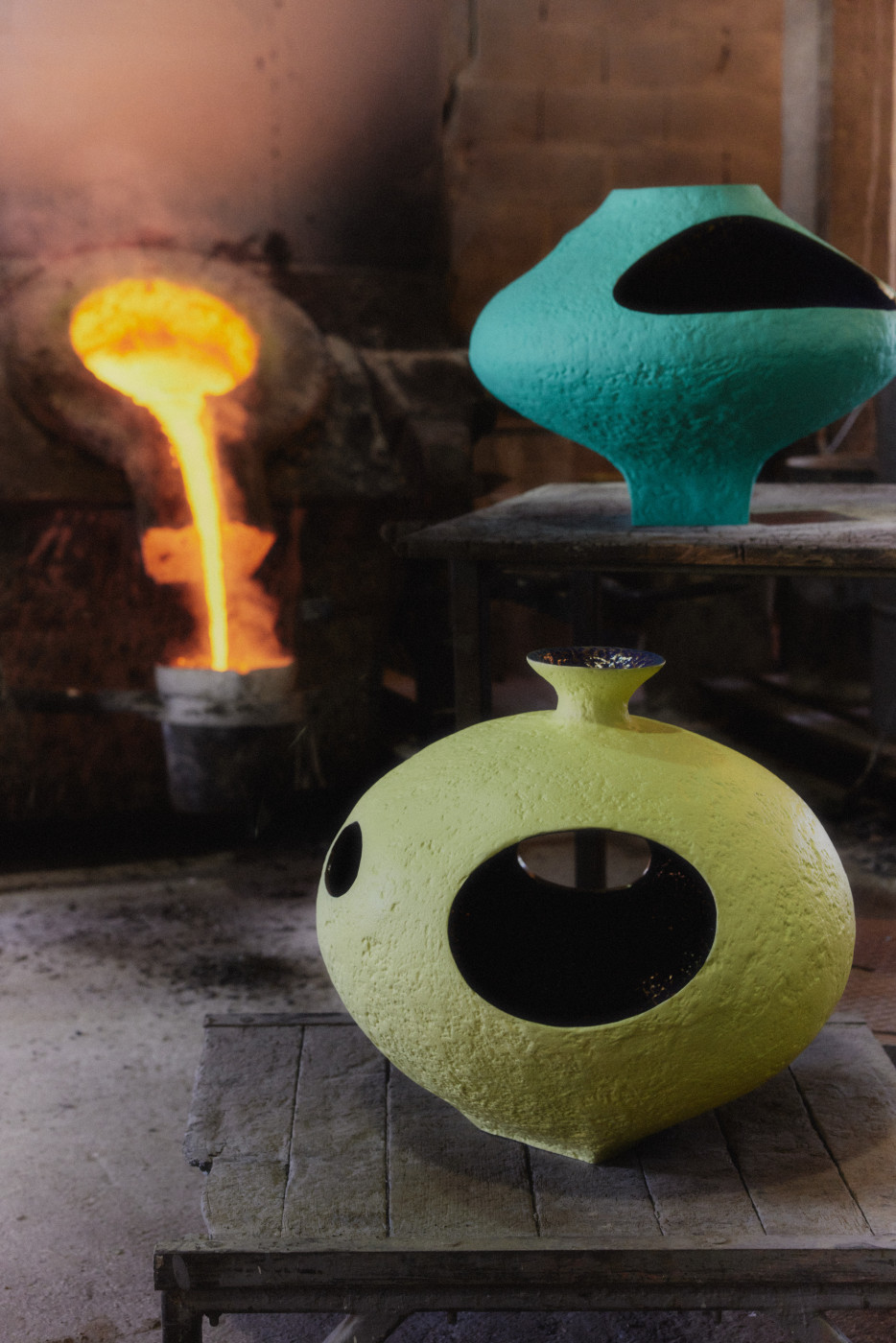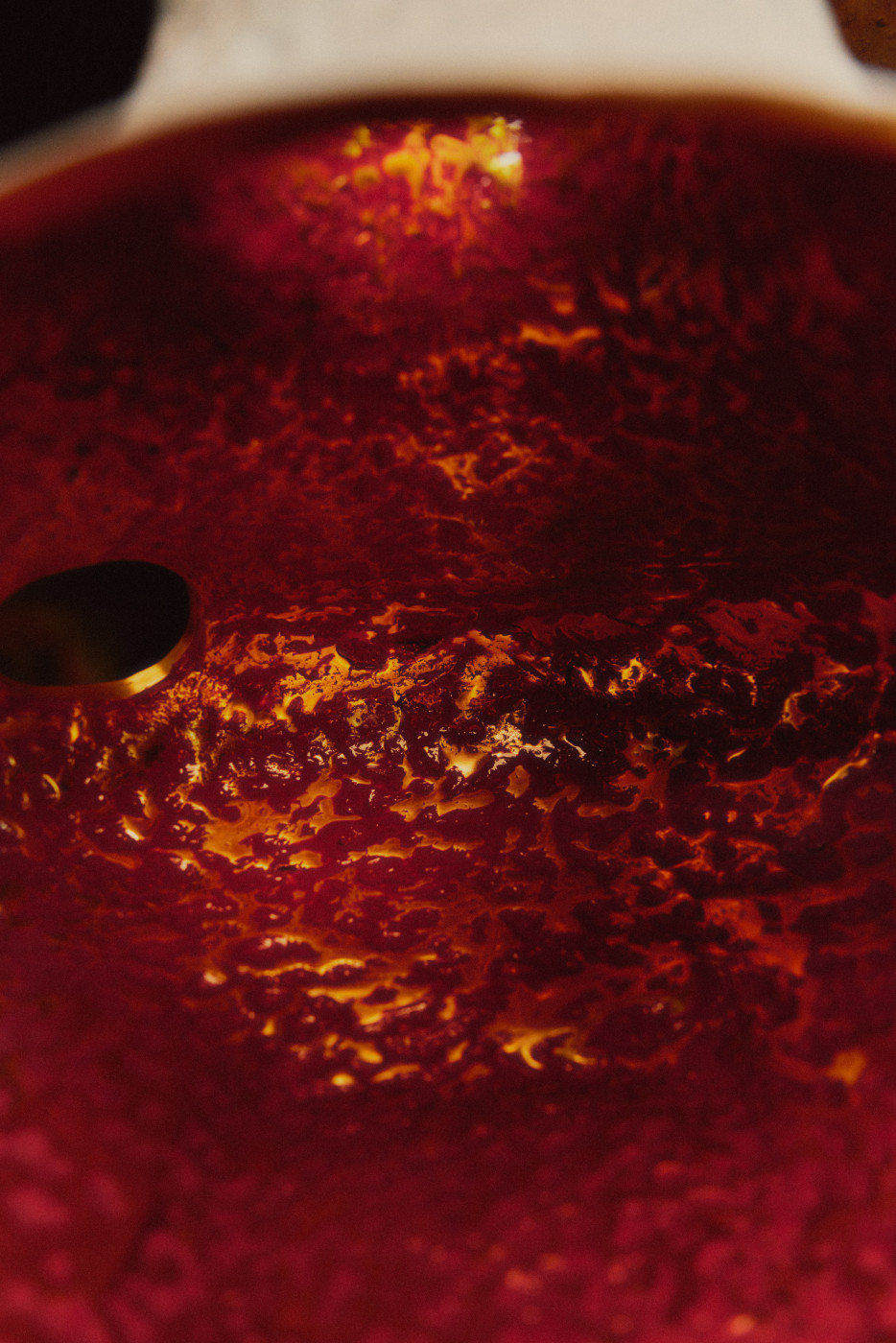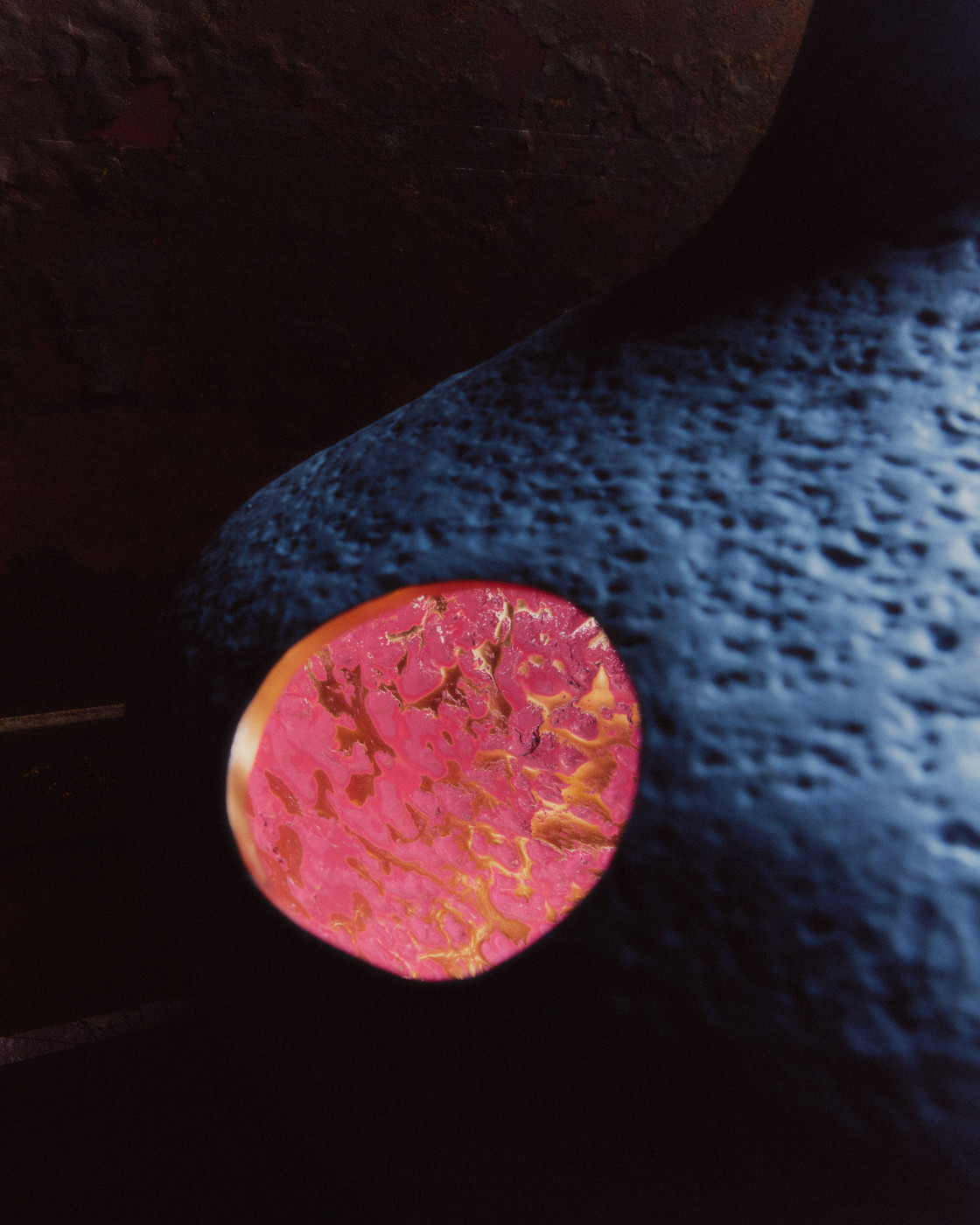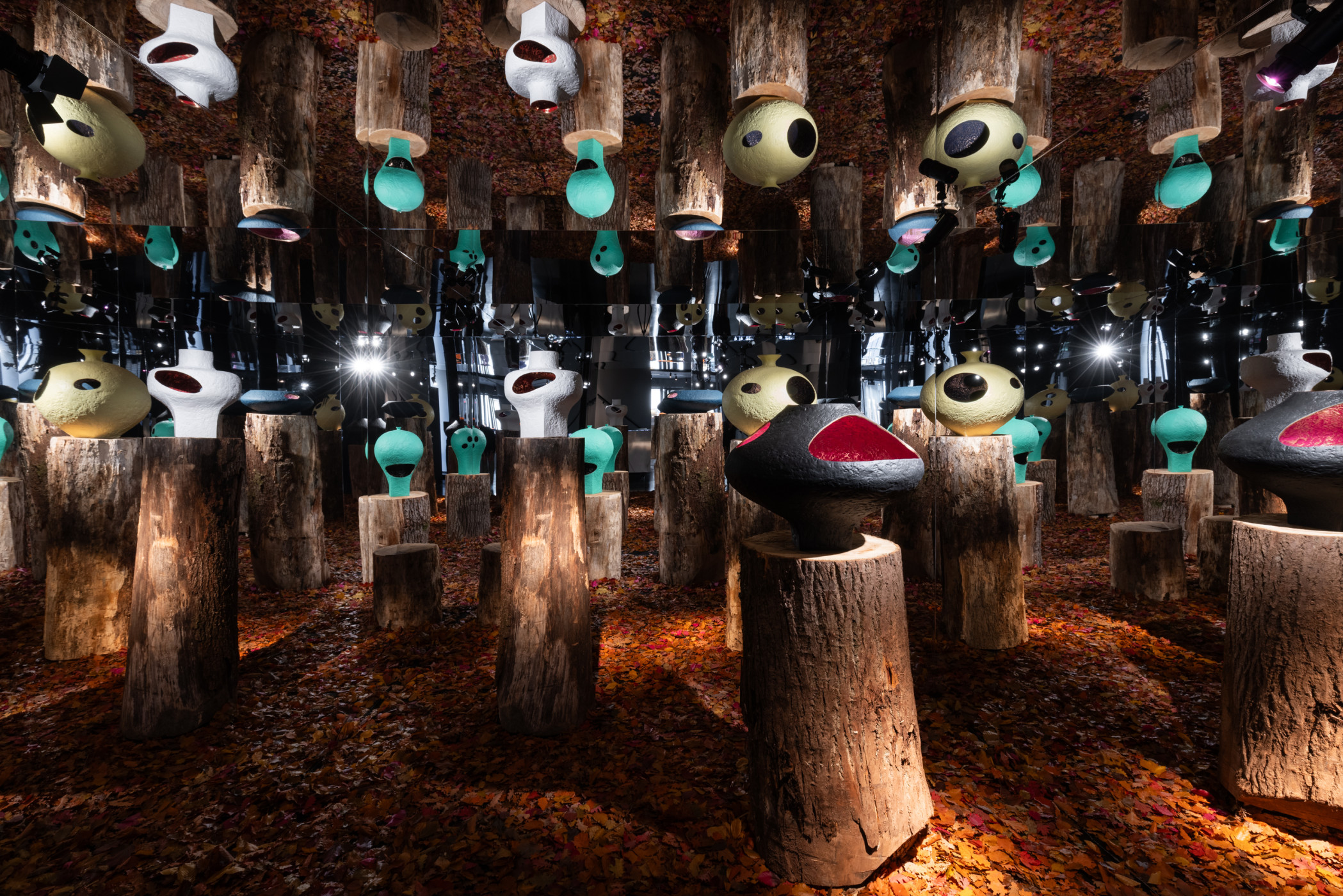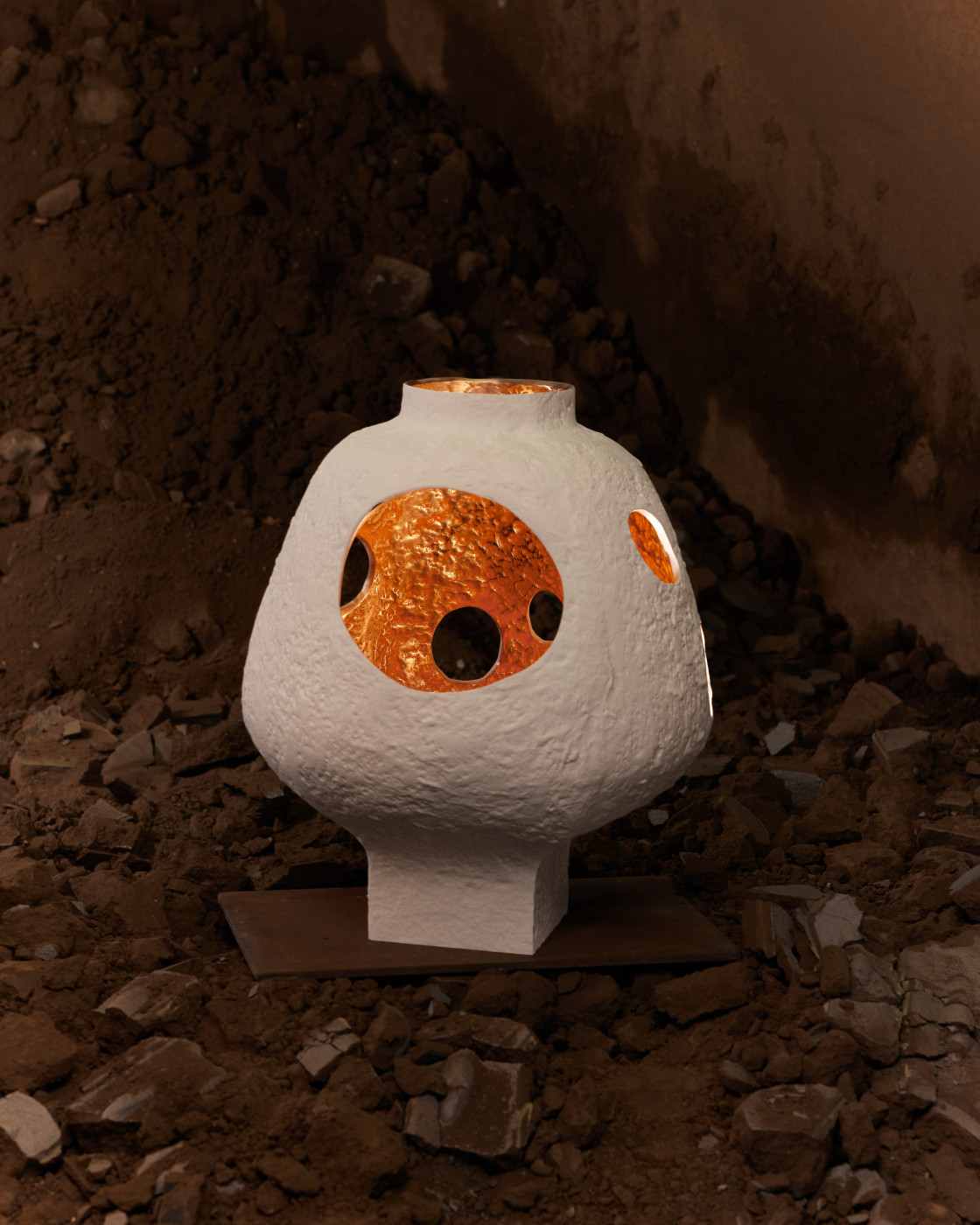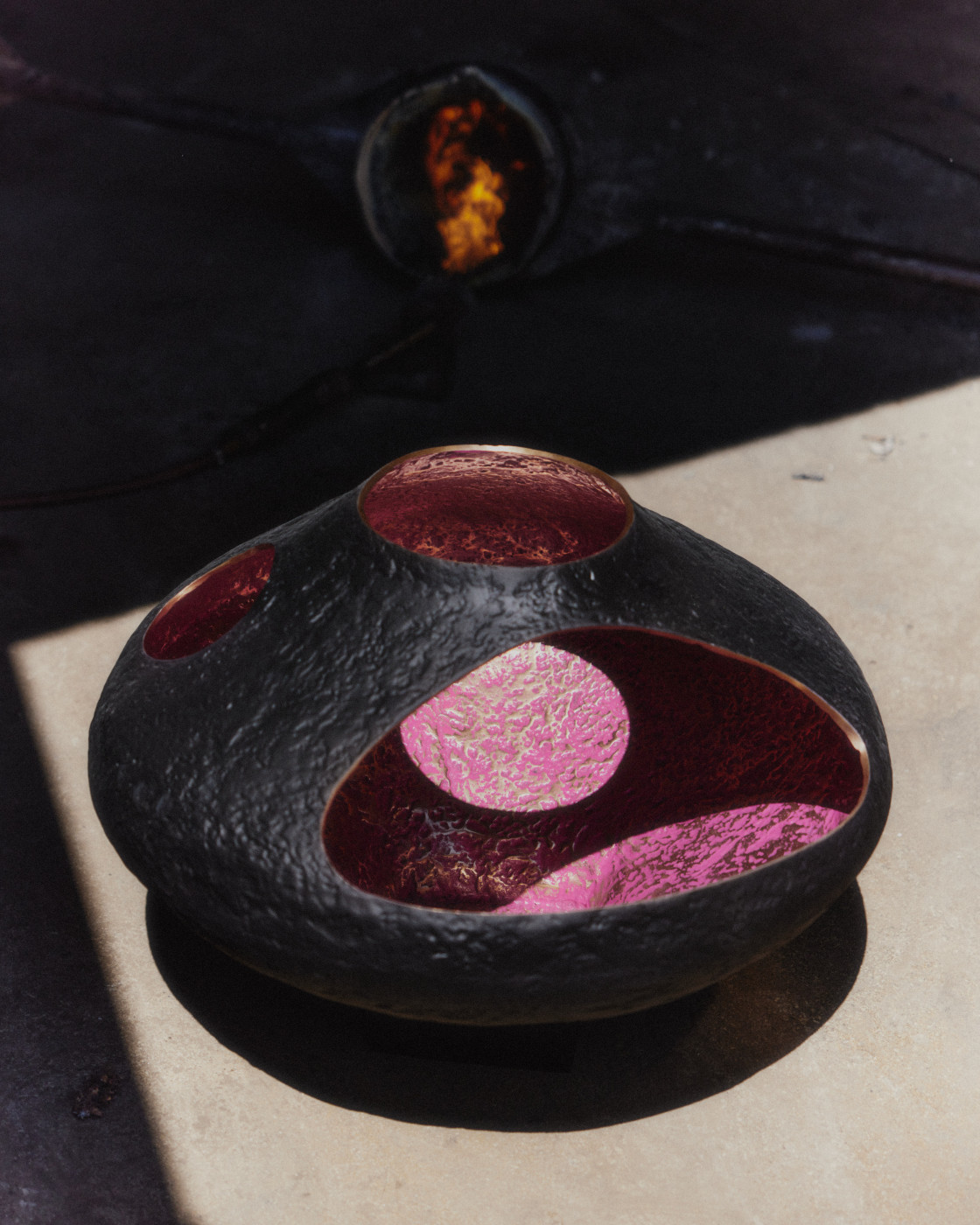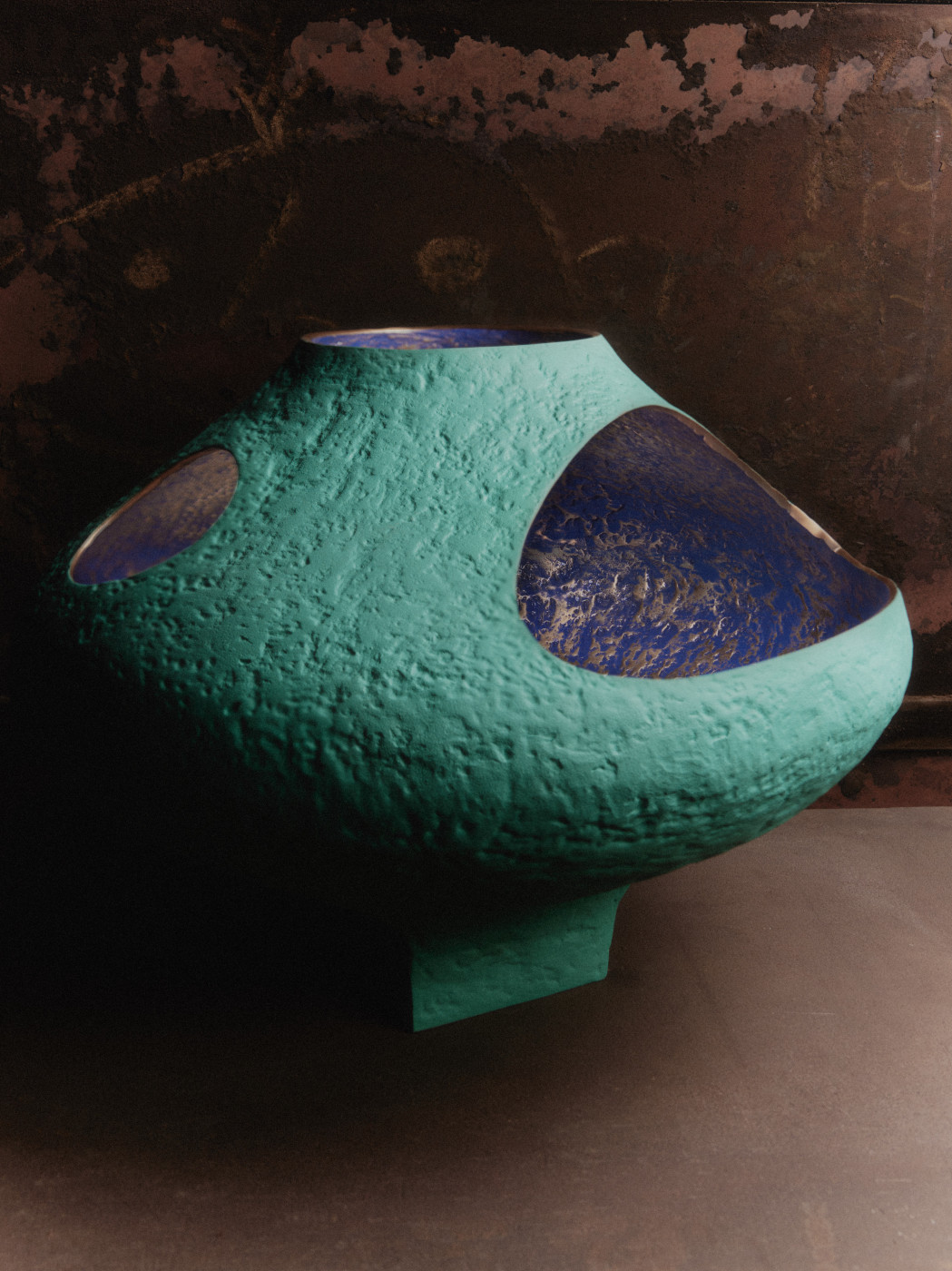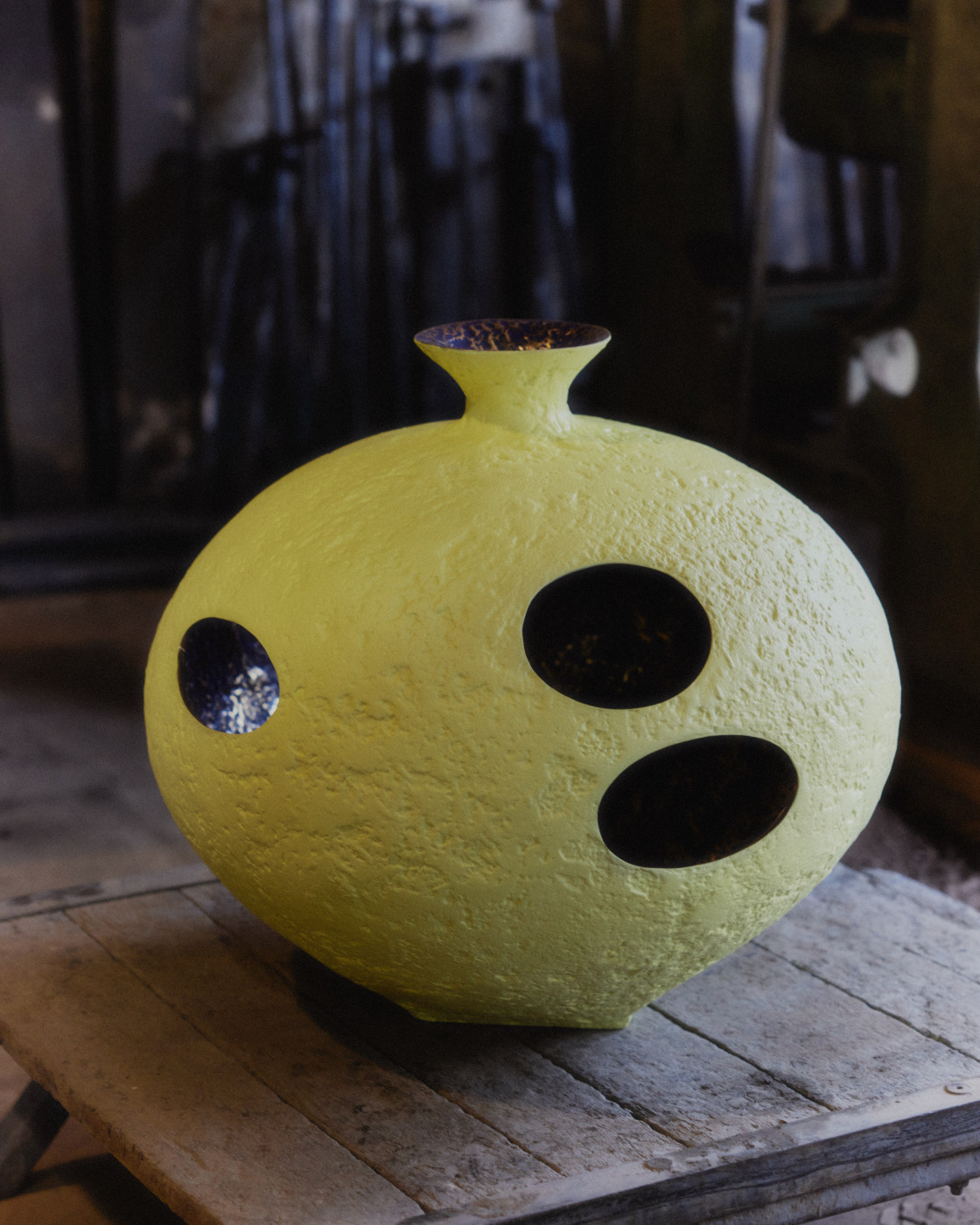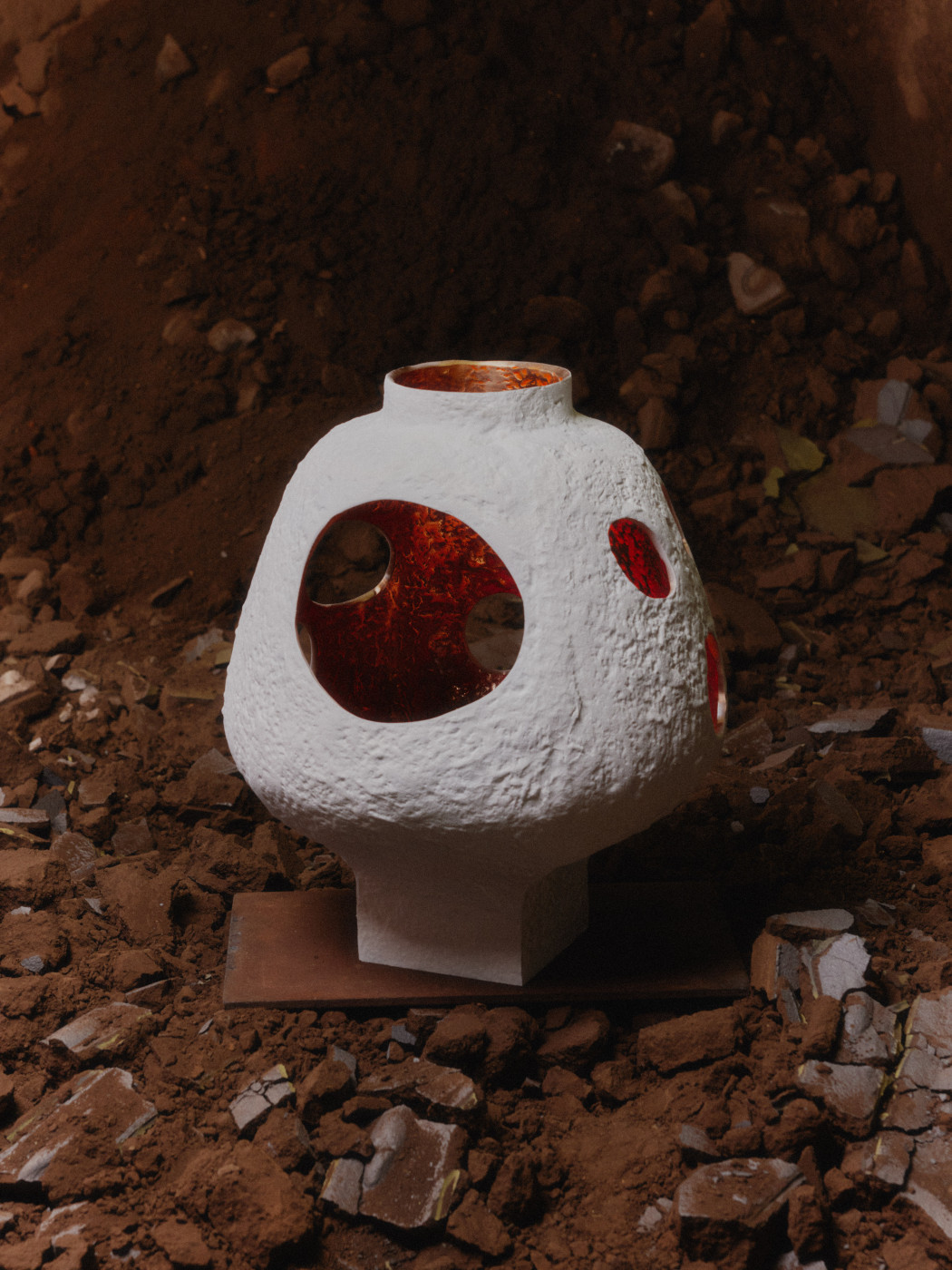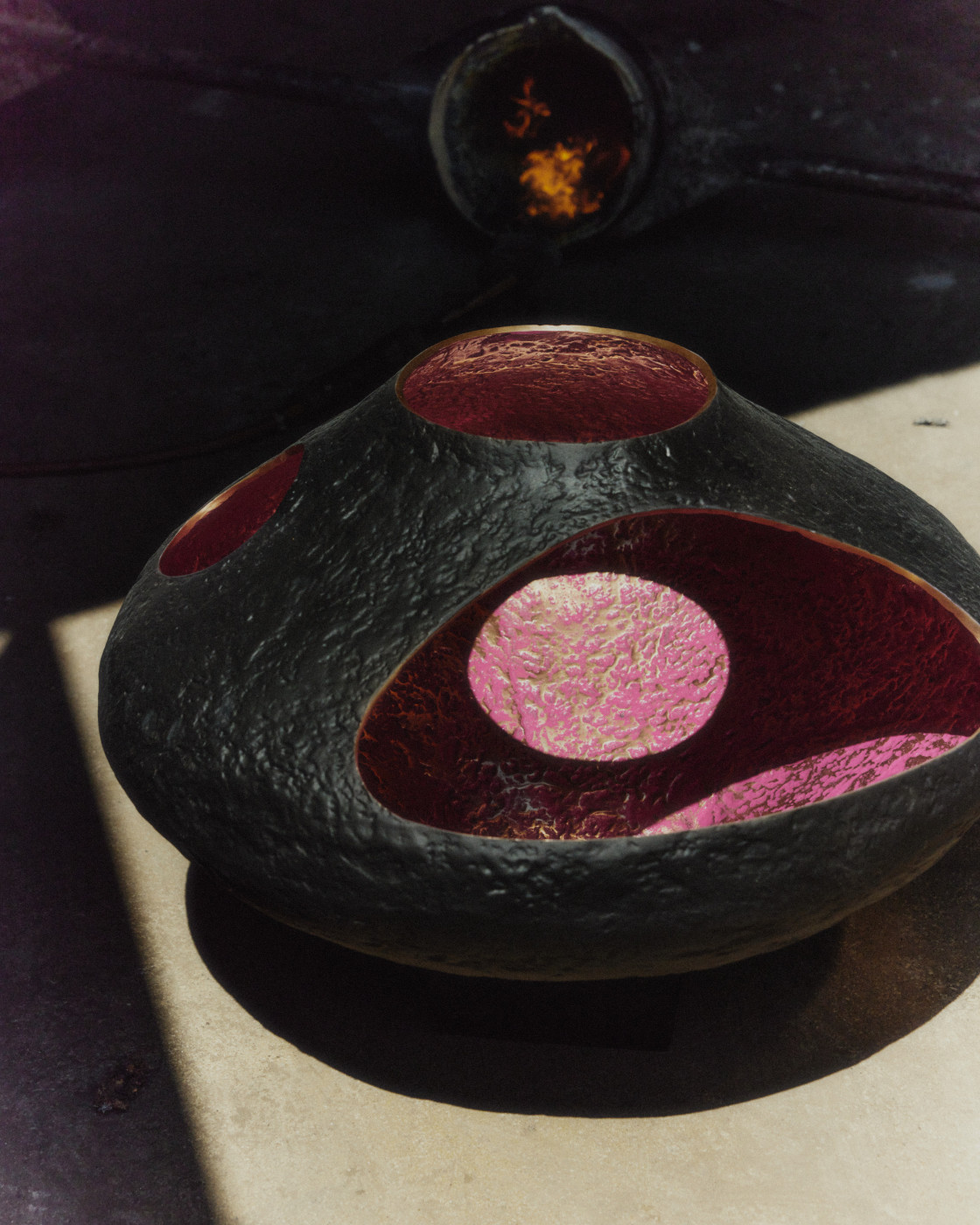
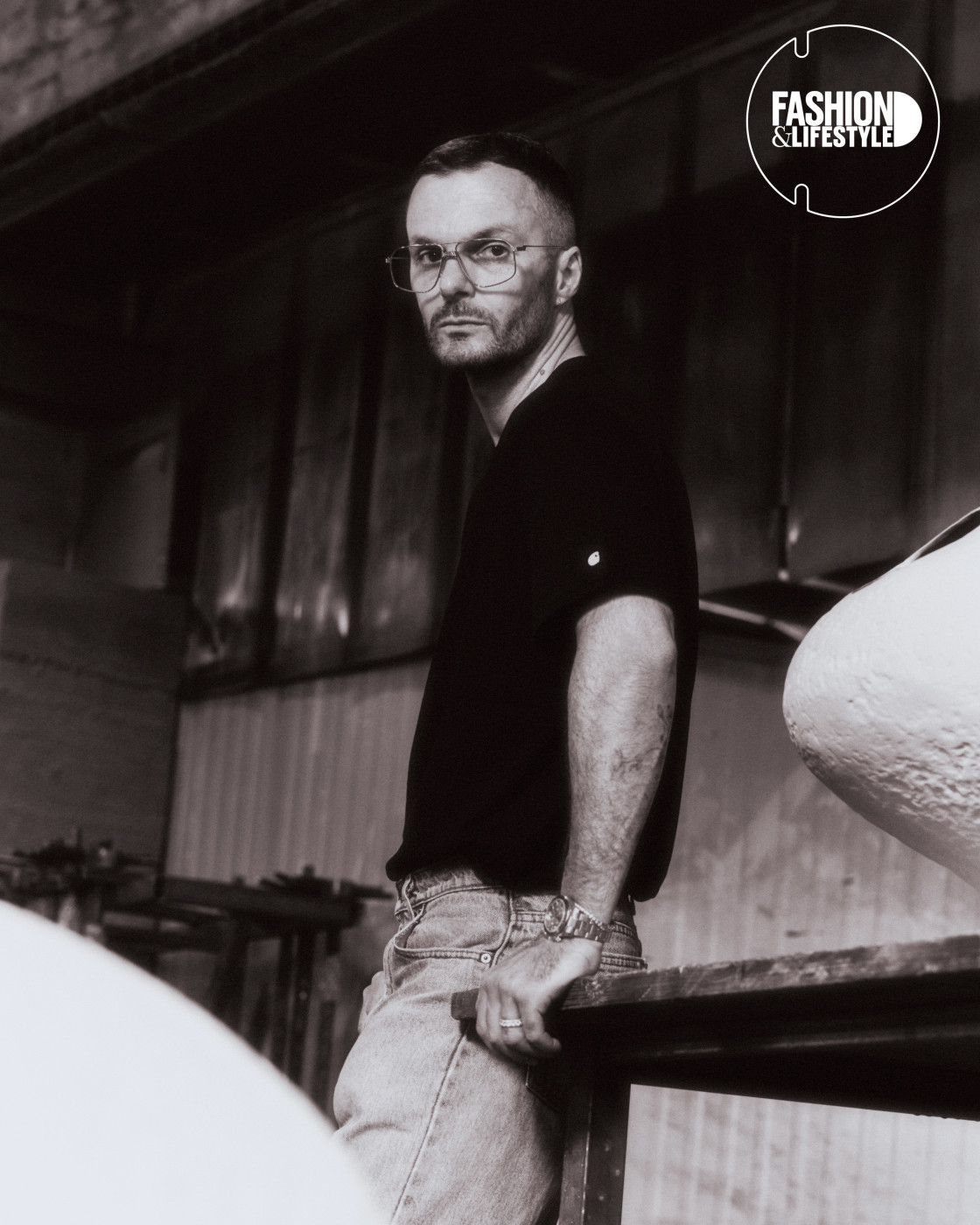
Kris Van Assche’s Nectar Vessels in Bronze
It’s the story of a beautiful comeback. Since his departure from Berluti in 2021, menswear veteran Kris Van Assche has remained out of the spotlight, leaving fans to wonder what might come next. Now, the secret is out. The designer has returned — not with a fashion collection, but with a series of design projects, beginning with Nectar Vessels, a collection of bronze vases on view at Galerie Laffanour Downtown on Paris’s Left Bank.
The space has been transformed into a mysterious, immersive forest, adorned with mirrors and alive with Van Assche’s unmistakable aesthetic — vivid colours, unexpected shapes, and a couture-like attention to detail. On view until 19 July, the exhibition reveals a new dimension of his creative universe.
Here, at the preview, the Belgian designer shares the ideas behind the project, reflects on the nature of beauty and the current state of fashion, and hints at what’s to come.
Tell us more about your new project.
It’s the first time I’m trying something completely new: making vases. I called the exhibition Nectar Vessels because, just like bees are drawn to flowers, they’re first attracted by the outside — the colour. But very quickly, they realise the inside is even better. Humans aren’t so different. We’re lured by colour and surface, but then we want to get closer, to look inside. In that way, we become the bees to these flower-like vases. That’s the idea, the metaphor at the heart of the work. And then, of course, the polishing and the materials — the pink gold, the honey-toned bronze — those choices felt instinctive. They made sense, visually and symbolically.
How did you approach this new form of creativity?
I went into it with a completely open mind. In my head, bronze felt quite old-fashioned—but then again, reworking something traditional for today is something I’ve done before in fashion. I enjoy that challenge. You can take anything from the past, but you have to make it feel contemporary. François Laffanour told me about the Fodor foundry in Port-sur-Saône, which works with various artists. They have true artisanal techniques, but also a really open-minded approach — they’re willing to try things they’ve never done before. I went there, we talked, and I asked: What are the possibilities? What can we create together? They threw everything at me. I spent two years learning the process, and I loved it. Making bronze pieces is also a journey in itself. It’s a four-hour train ride from Paris, and when you arrive, it’s like stepping into another time zone. Everything is done by hand. You spend the whole day there, fully immersed — and then you return to the city with this little bubble of experience.
How is this different from working in fashion?
It’s obviously completely different. But at the same time, I approached it as myself. I didn’t suddenly become a professional sculptor overnight and start making bronzes from scratch. I mean, I’m a fashion designer — but I never made the suits myself, either. Those were always created with artisans. Here, it was the same. I spent days and weeks working with them—developing the pieces, designing them, seeing the first 3D prints, checking the volume, the openings, the perspective. All of that felt very familiar. It’s a lot like what I do during fittings. I think the biggest parallel is that I fully recognise the importance of teamwork. The idea is born in my head, but it’s someone else’s hands that are essential to bring it to life.
And did you approach it the same way? Did you sketch?
Yes, I did! And then there was a whole process around colour, because the contrast between the inside and the outside is really important. We had to develop these lacquer finishes in the same way I would have developed fabrics in fashion. It’s the same way of thinking. And then, of course, there’s the equivalent of fittings — these trial moments. Because everything is done by hand, we were still making tiny adjustments literally a week ago. I’d be standing right next to them, saying, “Could you just turn that edge a little more?” That’s just how it happened.
Otherwise, colour-wise, everything is possible, right? Would you say you had an idea of a colour and they said, “Oh, that’s easy, we’ll develop it”—or were there things they said were impossible to achieve?
Everything was complicated because I really wanted a contrast between a matte, almost white finish on the outside and something very shiny on the inside. I wanted that clear reference to a flower. And contrast — any kind of contrast — is always super inspiring to me. The most challenging part was achieving that matte polish on the outside. That took a lot of work. What’s interesting is the layering: in some areas, the surface is completely covered, while along the edges, you see the bronze in its raw, untreated state. And then on the inside, it’s highly polished. That interplay of texture and finish was essential to the concept.
You also completely transformed the gallery space. It’s very different from what we usually see here.
Yes, the setup was something I came up with myself — I really wanted to create this imaginary forest right in the middle of a very busy street. I worked with a team I used to collaborate with on my fashion shows, which made it feel quite familiar — and actually, it turned out to be almost as complex as staging a show. I worked with Laetitia, who used to be part of Villa Eugénie when they produced my Dior Homme shows. She’s now an independent show producer, and it was great to reconnect creatively in this new context.
Your project is amazing. Why did you decide to go into fashion and not the arts?
I’ve always been interested in fashion. Before this project, I did two collaborations with Laffanour: first in 2018, when we customised Isamu Noguchi’s Akari lamps, and then again a year later — while I was already at Berluti — on a project reimagining seventeen original Pierre Jeanneret pieces, restoring and upholstering them in Berluti’s signature Venezia leather. I see those as part of my personal learning process. Growing up in Belgium, my parents weren’t particularly artistic, so even the idea of going to the Fashion Academy was already a big shock. I didn’t arrive with a huge cultural background, if you know what I mean. But from the age of twelve, I knew I wanted to work in fashion. That was always the first passion.
Then, of course, once you’re at the Academy, you need constant inspiration — you need to justify your ideas. So photography came quite quickly, because it’s so closely linked to fashion. And through fashion photography, you find your way into art photography. Then it’s architecture, then design… it becomes a constant learning curve, and that never really stops. When you’re doing six or eight collections a year, you need to be constantly nourished — not necessarily to get direct inspiration, but just to keep your mind alive. To exist creatively. And a funny thing: ever since I moved to Paris, I’ve been coming to this gallery — probably for fifteen or twenty years.
Did you ever consider formal training in art or design beyond fashion?
I really approached this project as a designer, and this is a design gallery. At that time, when I moved to Paris, I was very interested in design, and I remember spending quite a few Saturday afternoons here. That’s how I met François, the owner. He’s incredibly passionate and taught me a lot about design in general. From there, it just became part of an ongoing cycle — the presentations change, the art fairs evolve, there’s always something new developing. So you sort of stumble into it naturally.
How big is this collection? Is it a one-off project?
There are fourteen vases — seven designs, each in two colourways. It’s a series of eight per design, but they can be reproduced if someone wants to order one, because they’re moulded. That said, the moulding is just the first step. It’s like an Easter egg — you have two halves that have to be brought together. And once that’s done, each piece still has to be shaped and finished entirely by hand. So even though it’s technically a series, no two are exactly alike. Each one ends up being slightly different.
So, are you planning to continue in this realm? More pieces like this? Art fairs?
I would love to. I recently did another design project with the Belgian homeware company Serax — but that’s a very, very different story. Much more pragmatic, utilitarian objects. It’s another kind of creative expression. For me, it’s always about creative expression and beauty. And beauty is something I hardly ever talked about during my time in fashion. We always spoke about radicalism, pushing limits, being loud, being visible, and getting attention on social media. Everything had to have a certain violence to it. But now? I just want to create beautiful objects. Beauty is subjective — you either like it or you don’t. I’m not particularly trying to please everyone. I don’t really care. But for me, beauty — my version of it — might actually be the most radical thing of all.
Are these pieces functional? Can we put flowers in them?
They’re functional to a point. I made sure they can hold water, because bronze is toxic to flowers, and they’d die without protection. So we used a special lacquer inside to prevent that. But honestly, in my head, these vases don’t really need flowers. They are the flowers. That’s why I call them Nectar Vessels.
What’s your favourite flower? You post a lot of them on Instagram.
I love tulips—they were my mum’s favourite. We’ve always liked them because they feel less precious, less formal somehow. Even though, historically, tulips once held up an entire economy! So yes, I fully support the tulip economy (laughs).
And what’s next? Do you already have plans?
My exhibition isn’t even officially open yet! (laughs) But yes, of course—I’m already thinking about what’s next. It’s like being a fashion designer: you start working on the next collection as soon as the show ends. I’m hoping to launch a new collection with Serax, which I’m really happy about. It’s very different—more democratic in price and approach—but that’s something I love too. Making beautiful things accessible. And I’m also working on a fashion collection. Not high fashion, though—something quite different. It’s still under wraps, but I’m trying to approach it in a new way.
But I guess the problem is that the system doesn’t work anymore. When you were working in fashion — at your own brand, then Dior, then Berluti — you were very visible. That feels very different from now, where designers often leave houses after just a couple of years.
Yeah, I was very lucky to have those big chapters in my life. If a great opportunity came along tomorrow, I’d definitely jump on it. But those were different times, when you were given the space and time to really tell a story. I had my brand for eleven years, was at Dior for eleven years, then Berluti for three — and those were moments when I could truly create something meaningful.
Does it feel nice to be off the fashion circus?
Yes, but I’m happiest when I’m active, when I’m working. I worked nonstop for twenty years, never had a day off, and usually juggled more than one job. I used to make six collections a year, so I was already working on the next one before the previous one even showed. When it stopped, it felt like kicking a habit. It’s healthy, but not something you enjoy. At first, I didn’t enjoy it at all. I was so busy and exclusively focused on Dior or Berluti, I had excluded all other opportunities. Then suddenly, when that stopped, there was nothing. People often say, “You must be so happy to have free time,” but honestly, a little action would be nice. It takes time to build new connections, like with François’s gallery, which I’m really happy about now.
When did you start working on this project?
François and I started discussing it two years ago, so it’s been in my head that long. But there was no way I could talk about it before it was ready. The same with the Serax project — it took about a year and a half to develop. People ask, “What is this designer doing? We don’t see him anymore!” I was actually quite busy, just had nothing to show. Then I launched these two projects within three weeks of each other, and suddenly everyone asked, “Why two projects at the same time?” But that’s just how it is.
Finally, how would you define beauty?
Beauty is emotion, but not in an aggressive way. It’s deeply personal. When I see people come into the gallery, check out my vases, and genuinely like them — that’s the point. You could just sit on that free tree trunk and take a moment to stop time. Beauty is about the moment.
Nectar Vessels is on view at Galerie Laffanour Downtown, 18 rue de Seine, Paris 75006, until 19 July.
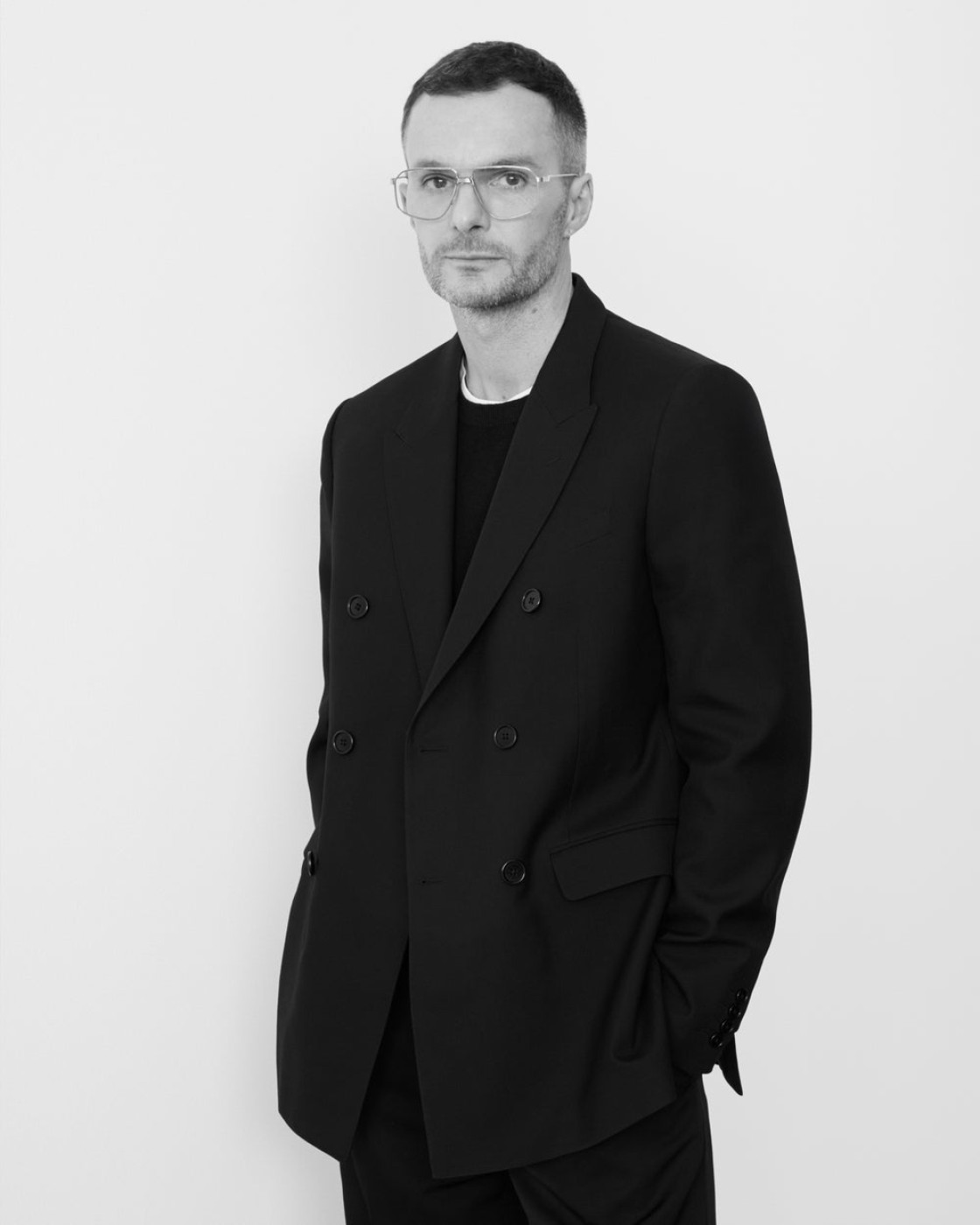
Courtesy of Kris Van Assche
Text: Lidia Ageeva




